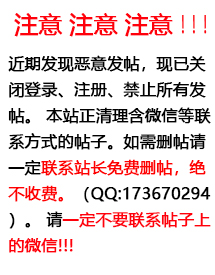


Chinese banks:Oct 2017banking data-Orderly financial deleveraging
Slower credit and banking assets growth, but with improving mix According to the lates...



Slower credit and banking assets growth, but with improving mix According to the latest data on loans/TSF and the banking system, China’sfinancial deleveraging has been orderly: credit growth softened further,M2/GDP continued to slide, shadow banking has been shrinking while loangrowth stayed resilient and wholesale funding declined. Another positivedevelopments this month is that short-term consumption loans have slowed ontighter rules, a notable portion of which was used to finance propertypurchases. From the financial system’s perspective, we see improvingtransparency and lower systemic liquidity risks. Big banks should be the keybeneficiaries of the neutralized monetary policy.Softened credit growth, leading to moderated system leveragePBOC released Oct new loans of Rmb663bn and TSF of Rmb1,040bn, bothfalling short of consensus. Including the new municipal bonds of Rmb340bn,the adjusted system credit growth slowed mildly to 14.9% yoy from 15.0% lastmonth. Notably, following a series of tightening regulations, banks are bringingoff-BS shadow banking into on-BS, leading to stable loan growth (13.0% yoy),but slower shadow banking growth. We note that banks, especially smallerbanks, have been shrinking their on-/BS receivable investments, which mainlyconsists of shadow banking credit. Slower credit growth resulted in slowerM2. Together, with pick-up in nominal GDP, it has led to lower M2/GDP,dropping to 206% in Oct 2017versus the record-high of 210% this March. Who is borrowing? Household borrowed less, while government levered up A breakdown by borrowers suggests that the household/corporate sectorborrowed modestly less in Oct, with its new credit making up 29%/30% of thenew system credit (31%/40% in Sept); government accounted for 37% of thetotal new credit. For households specifically, monthly new short-term retailloan recorded Rmb79bn in Oct 2017against an average volume of Rmb171bnin 9M17. We attribute this to tightening scrutiny over consumption loans. Asdiscussed in our report Where did consumer loans go?, we estimate 1/3of newconsumption loans may be used to finance the purchases of second homes.Elsewhere, mortgage loan growth slowed to 24.4% yoy in Oct (Sept: 25.5%). Who is lending? Balance sheet contraction continues among smaller banks China’s banking assets growth further slowed to 10.2% yoy in Sept (vs. 2016:16.5%). Banks have scaled back interbank borrowing and NCDs due to thehigher funding costs. This has led to the unwinding of interbank lending. Bybanks, the slower asset growth was mainly dragged down by smaller banks.Total asset growth of joint-stock and city/rural banks (44% of total bankingassets) decelerated to 10.7% yoy in Sept from 19% in 2016. In contrast, BigFive banks’ (36% of total banking assets) asset growth rebounded slightly to8.5% yoy in Sept (Aug: 8.2% yoy). Policy outlook – easing unlikely, elevated market rates to benefit the Big Four While the deleveraging may contribute to a modestly slower economy, growthmomentum is in line with our house view. We believe China will likely continueto push for financial deleveraging, as the goal has not been achieved andeconomic conditions are resilient. With elevated market rates, the big banksshould benefit. We continue to prefer big banks and stay cautious on smallerones. Top picks: BOC, ABC and CCB.
声明:如本站内容不慎侵犯了您的权益,请联系邮箱:wangshiyuan@epins.cn 我们将迅速删除。
 热词推荐
热词推荐
MORE+
- 1如果你打算将炒股进行到底,那么这篇文章建议看三遍!或许不能帮助你一跃成为高手,但(维远股份600955)
- 2早评:众多利空来袭!A股迎来关键时刻周五,美股和富时中国A50以及恒生科技指数期(维远股份600955)
- 3后续持续调整为主(bk0475)(04-27)
- 4这几天在调整的时候,就可以买点。一般而言,股价创新高后,回调整理一段时间(中国海油600938)
- 53月份三桶油年报全部披露完毕,仅有中国石油年报业绩实现正增长。我们来瞧一下三桶油(中国海油600938)
- 6老头原来不是在中石化唱多的么?活活把中石化从7块唱回了5块。这次又来中海(中国海油600938)
- 7股吧都不热闹,不少人离场了吧,都在等回调,可惜马上又要新高了 (中国海油600938)
- 8咱们就守着海油,不去外面当接盘侠 (贵州茅台600519)
- 9国际原油价格高位运行助推中国海油迈向新台阶。(中国海油600938)
- 10自30.88涨停日以来,净增仓0股,成本由16.228元下降0.595元至15.(中国海油600938)
- 11国际原油暴跌,逢低买入中国海油机不可失。(中国海油600938)
- 12药明今天做了倒差价多了0.21[哭][哭][哭] (中国海油600938)
- 13中国海油的大跌为踏空的投资者提供了买入机会。(中国海油600938)
- 144/23上午以28.25元买入中国海油(A股)300股,现总持仓数0.30万股,(中国海油600938)
- 15国际原油大幅反弹,中国海油逢低买入机会难得。(中国海油600938)
- 16这挣钱的速度海油自己开个银行不过分吧(中国海油600938)
- 17一季报已公布,现对海油的个人目标价进行调整。个人持仓中非卖品由0.24万股(由2(中国海油600938)
- 18参股公司在赞比亚拥有1640万吨铜钴渣堆矿资源(合纵科技300477)
- 19省长一行先后参观了厚普股份企业展厅和数字化智能制造车间,听取了公司氢能业务发展介(厚普股份300471)
- 20华字辈中的低价股~多高看一眼(华联股份000882)
- 21长园集团无趣(长园集团600525)
- 22中天科技今天又迎来了难得的日线回调,有人敢买吗?相信很多人不敢买,都怕转跌,都怕(中天科技600522)
- 23首先祝女性朋友“三八节”快乐!写帖前先来回顾一下说客昨帖之预判:还是那句话:现阶(中天科技600522)
- 24炒股只能追随风口,不能太理性,追本溯源人都离不开水和粮食,但,这些股并不(中天科技600522)
- 25中天今天很明显就是借大盘下跌洗盘,尽管大盘收红了,中天也依旧在深水下,主力就是不(中天科技600522)
- 26中天科技在未收盘站上5日线或未阳包阴前暂且只能当下跌趋势对待,维持昨帖之认知,建(中天科技600522)
- 27周一策略:1、2~4个点以下低开,开局就进,等待盘中急拉红4个点左右离场。2、低(中发科技600520)
- 28上周五满仓文一科技,不是没有道理。(中发科技600520)
- 29中发科技它来了(中发科技600520)
- 304月26日收评:A股三大指数今日集体大涨,上涨股票接近4000只,成交量直接爆发(商络电子300975)
- 上海贝岭股吧
- 浙大网新股吧
- 华东科技股吧
- 隧道股份股吧
- 深赛格股吧
- 光大银行股吧
- 中国银行股吧
- 永鼎股份股吧
- 苏州高新股吧
- 新安股份股吧
- 精达股份股吧
- 中国医药股吧
- 东风科技股吧
- 金健米业股吧
- 西部资源股吧
- 招商银行股吧
- 中联重科股吧
- 中国宝安股吧
- 中集集团股吧
- 德赛电池股吧
- 复星医药股吧
- 宇通客车股吧
- 中国建筑股吧
- 葛洲坝股吧
- 大唐电信股吧
- 华丽家族股吧
- 罗牛山股吧
- 中色股份股吧
- 京东方A股吧
- 新疆天业股吧
- 天坛生物股吧
- 抚顺特钢股吧
- 锦龙股份股吧
- 云天化股吧
- 振华科技股吧
- 国中水务股吧
- 华发股份股吧
- 飞乐音响股吧
- 青岛双星股吧
- 中国核电股吧
- 中国中铁股吧
- 西部矿业股吧
- 时代新材股吧
- 科达股份股吧
- 士兰微股吧
- 浦发银行股吧
- 中金黄金股吧
- 哈投股份股吧
- 航天晨光股吧
- 同仁堂股吧
- 维维股份股吧
- 福耀玻璃股吧
- 新五丰股吧
- 中航资本股吧
- 中金岭南股吧
- 丰原药业股吧
- 四环生物股吧
- 哈药股份股吧
- 万向钱潮股吧
- 中国高科股吧


